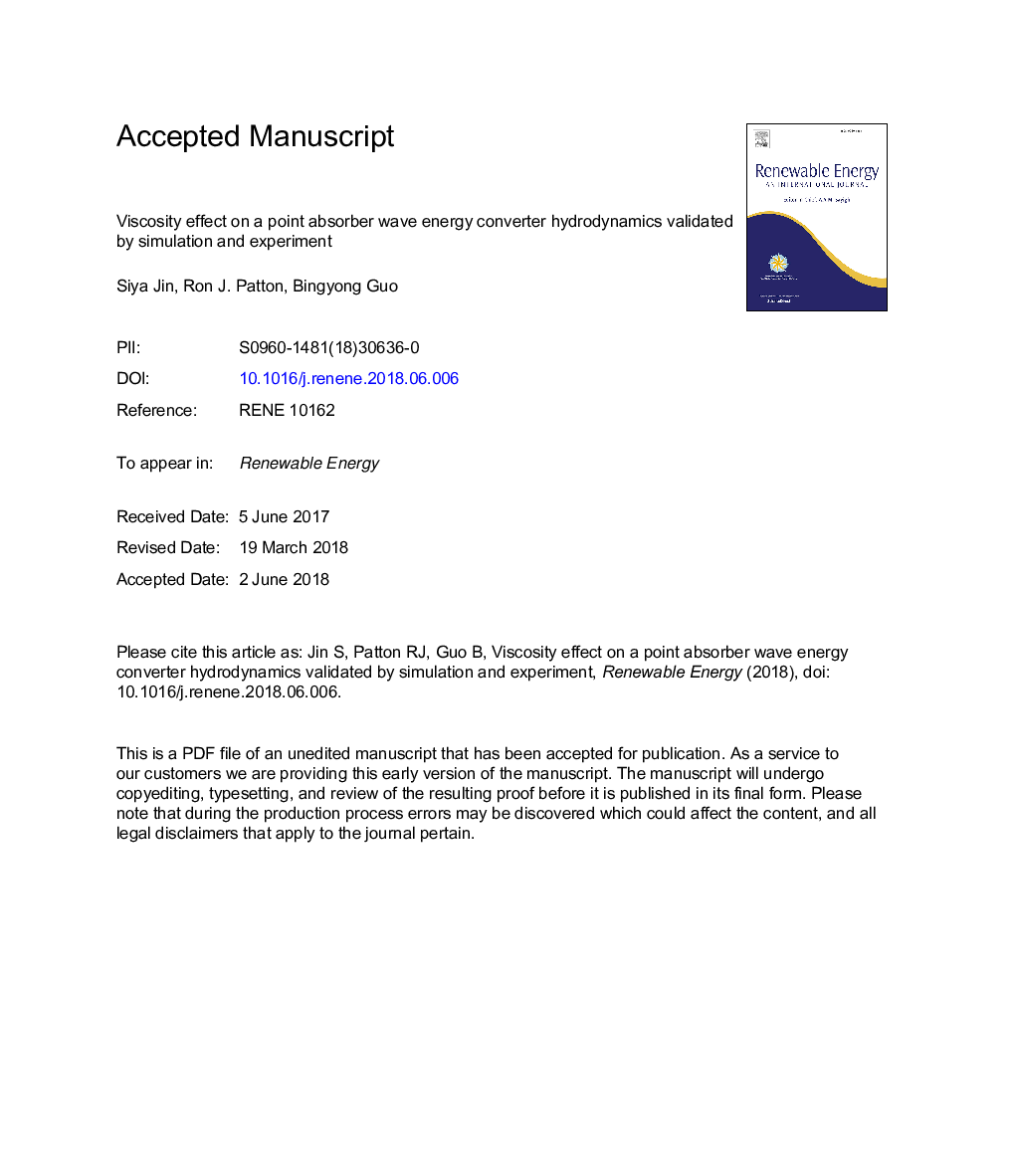| Article ID | Journal | Published Year | Pages | File Type |
|---|---|---|---|---|
| 6763958 | Renewable Energy | 2018 | 38 Pages |
Abstract
To achieve optimal power in a wave energy conversion (WEC) system it is necessary to understand the device hydrodynamics. To maximize conversion efficiency the goal is to tune the WEC performance into resonance. The main challenge then to be overcome is the degree to which non-linearity in WEC hydrodynamics should be represented. Although many studies use linear models to describe WEC hydrodynamics, this paper aims to show that the non-linear viscosity should be carefully involved. To achieve this an investigation into the hydrodynamics of a designed 1/50 scale point absorber wave energy converter (PAWEC) in heave motion only is implemented to indicate the non-linear viscosity effect. A non-linear state-space model (NSSM) considering a quadratic viscous term is used to simulate PAWEC behaviors. The non-linear model is compared with the linear counterpart, and validated by computational fluid dynamics (CFD) and experimental data. A conclusion is drawn that the non-linear PAWEC hydrodynamics (including amplitude and phase responses, conversion efficiency) close to resonance or at high wave heights can only be described realistically when the non-linear viscosity is correctly taken into account. Inaccuracies in its representation lead to significant errors in the tuning procedure which over-predict the dynamic responses and weaken the control system performance.
Related Topics
Physical Sciences and Engineering
Energy
Renewable Energy, Sustainability and the Environment
Authors
Siya Jin, Ron J. Patton, Bingyong Guo,
